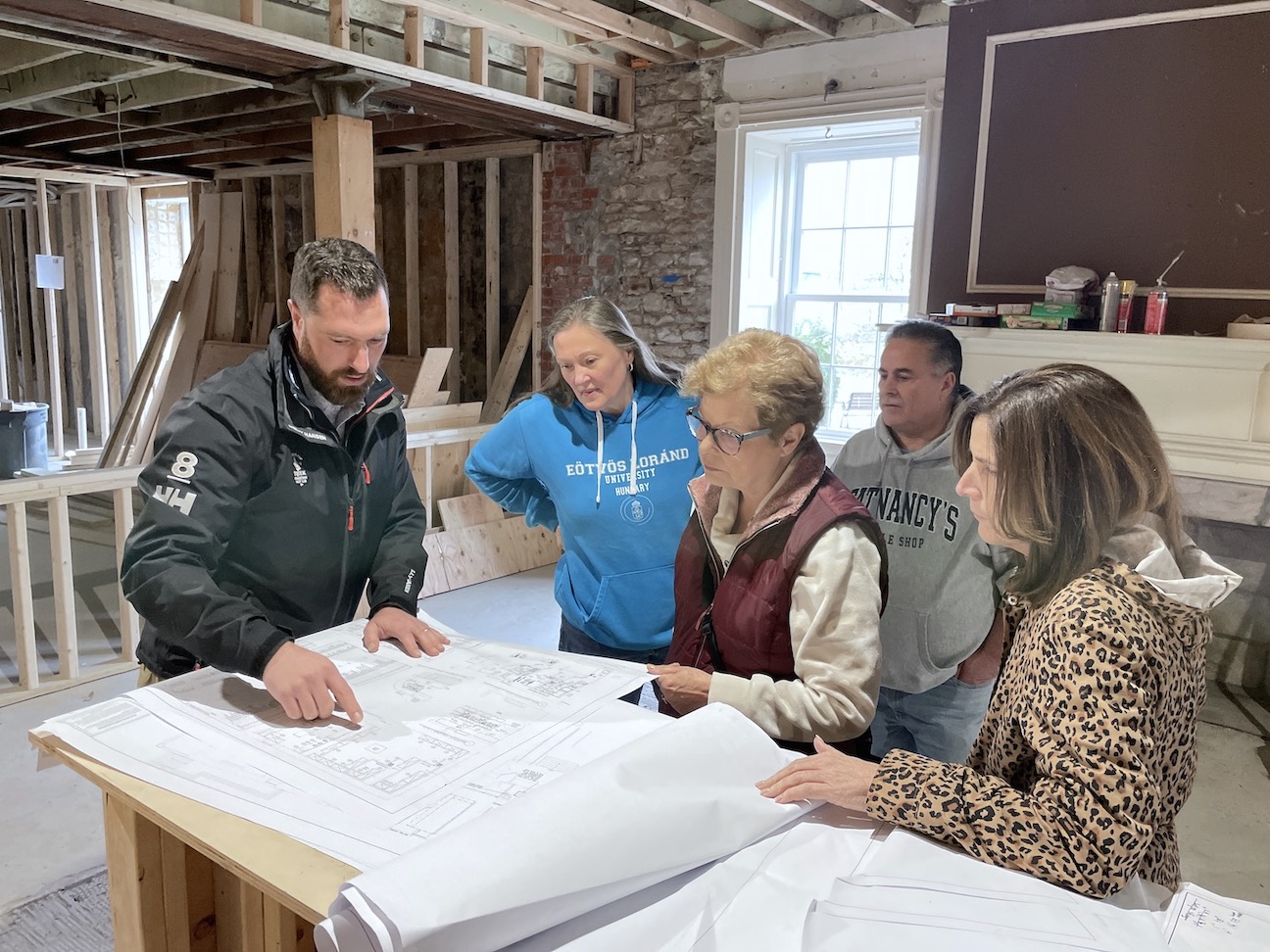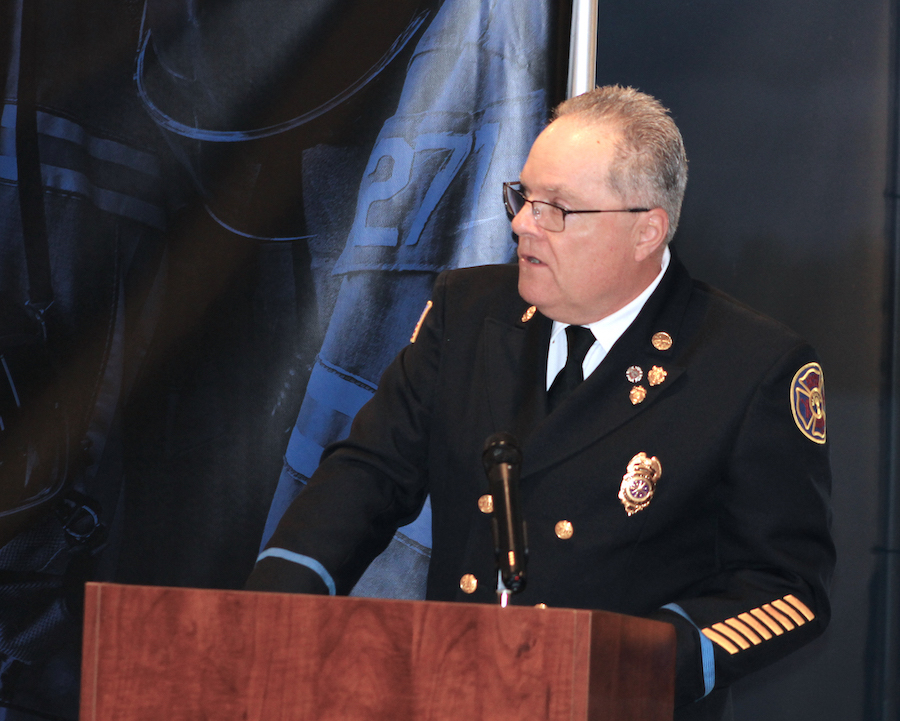Featured News - Current News - Archived News - News Categories
More than 380,000 have received emergency and disaster preparedness training through New York’s Citizens Preparedness Corps; find a training nearby here
√ Sign up for NY-Alert, state’s free emergency alert system
Submitted by the Office of Gov. Kathy Hochul
Gov. Kathy Hochul on Monday announced the start of Severe Weather Awareness Week in New York state, and is encouraging New Yorkers to take steps to prepare themselves and their households for severe weather.
The governor reminded New Yorkers that one of the best ways to stay prepared is by taking a New York State Citizens Preparedness Corps course and hearing directly from emergency management experts on the steps individuals and families should take to stay safe during severe weather.
New Yorkers should sign up for NY-Alert the state’s free emergency alert system, to receive weather and other timely emergency alerts.
“We hope for the best but prepare for the worst, and Severe Weather Awareness Week shines a light on how important that preparation is,” Hochul said. “I encourage all New Yorkers to review these safety tips and follow them as closely as possible. Being informed is key when it comes to saving lives.”
The New York State Citizen Preparedness Corps (CPC), administered by the New York State Division of Homeland Security and Emergency Services (DHSES) and the New York National Guard (DMNA), was established in 2014 to train everyday New Yorkers how to prepare for emergencies and disasters, respond immediately and recover as quickly as possible to pre-disaster conditions. Approximately 388,000 New Yorkers have taken CPC training in community settings throughout the state since 2014.
During a CPC training, attendees learn about the four steps to preparedness that each New Yorker should know and take action to complete before the next disaster strikes:
√ Develop a plan for you and your family at home, school, work and outdoors. Identify a safe place to take shelter and know what actions to take when a warning is issued. Consider pets when planning for an emergency.
√ Build a kit of emergency supplies to last at least 10 days. Include flashlights, weather radio and extra batteries. You should have one kit each for your home and your vehicle. Plan for any medical needs your family may have. Keep emergency supplies for pets.
√ Stay tuned to TV and radio stations that broadcast Emergency Alert System (EAS) messages and follow local emergency orders when issued. Receive emergency information direct to your computer or cell phone by subscribing to NY-Alert at alert.ny.gov, a free service that provides you with critical emergency information when you need it most.
√ Visit your local emergency management office to learn more about how to protect you and your family. Consider volunteering with organizations such as the American Red Cross, New York Cares or the Salvation Army.
DHSES Commissioner Jackie Bray said, “I hope New Yorkers take a moment during this week to make a plan to protect their family in the event of severe weather. It’s a good reminder that NY experiences floods and tornadoes, often more common in the spring and summer, and New Yorkers should stay alert and be aware.”
In 2023, flooding from heavy rain events remained the most commonly occurring weather disaster in New York. On July 9, 2023, torrential downpours from slow-moving thunderstorms brought up to 9 inches of rain to parts of the Mid-Hudson region and New York City in a three-hour period, and another 3-5 inches of rain on July 13 and 14. In separate events last summer, an outbreak of storms in early August in Central New York resulted in the formation of seven tornados within a few hours.
As extreme weather events like these become more frequent, New York state continues to work hand-in-glove with critical partners not only closely monitor weather patterns, but to help protect communities and infrastructure against the impacts of future storms and other extreme weather events.
In December 2023, Hochul announced the creation of New York’s State Weather Risk Communication Center at the State University of New York at Albany. The SWRCC is a first-of-its kind operational collaboration between university researchers and state emergency managers and serves as a clearinghouse for critical weather information. It also works to develop tools to help emergency managers make informed decisions to help protect communities and examines how communicating extreme weather risks to the public can be improved.
SWRCC Director Nick Bassill, Ph.D., said, “The NY State Weather Risk Communication Center is proud to contribute to the mission of our emergency management partners in the state by creating new weather tools and communication strategies. These tools leverage a wealth of weather data unique to NY such as the NYS Mesonet in addition to local infrastructure data to pinpoint locations likely experiencing flooding in real-time. During this severe weather season, we will work closely with our emergency management partners to improve the preparation and response to impactful weather events.”
New York state also works closely with the National Weather Service (NWS), which provides weather, water and climate data, forecasts, warnings, and other support services to help protect life and property in New York state and across the country. The NWS Albany Forecast Office is the main office for New York state with additional supporting offices in Buffalo, Binghamton, Upton, and Burlington, Vermont.
NWS Meteorologist-in-Charge Christopher Gitro said, “New York state receives all forms of severe weather caused by thunderstorms, from strong winds and large hail to flash flooding and the occasional tornado. Remember, there is no safe place outside when thunderstorms are in the area. If you can hear thunder, you can be struck by lightning. Stay alert for the possibility of thunderstorms and severe weather by monitoring the latest forecasts and hazardous weather outlooks at www.weather.gov.”
The New York State Office of Emergency Management and its Watch Center is staffed year-round to monitor weather and other emergency or disaster-related events across the state. They work with local, state and federal government entities, including the NWS and SWRCC, to provide accurate and timely information to emergency responders and the public regarding potentially severe weather and how to prepare.
Severe weather safety tips
•Flash flooding
√ Never attempt to drive on a flooded road. Turn around and go another way.
√ If water begins to rise rapidly around you in your car, abandon the vehicle immediately.
√ Do not underestimate the power of fast-moving water. Two feet of fast-moving flood water will float your car, and water moving at 2 miles per hour can sweep cars off a road or bridge.
•Thunderstorm
√ Know the difference between a watch and a warning: A watch means storms are possible, but a warning means that a severe storm was spotted and is expected to move through your area soon.
√ If you can hear thunder, you are close enough to the storm to be struck by lightning. Go to safe shelter immediately like a sturdy building. If sturdy shelter is not available, get inside a hard-top automobile and keep windows up.
√ Get out of boats and away from water.
√ Telephone lines and metal pipes can conduct electricity. Unplug appliances not necessary for obtaining weather information. Avoid using the telephone or any electrical appliances. Use phones only in an emergency.
√ Do not take a bath or shower.
√ Turn off air conditioners – power surges from lightning can overload compressors.
√ Get to higher ground if flash flooding or flooding is possible.
√ Do not attempt to drive to safety – most flash flooding deaths occur in automobiles.
√ If outdoors, find a low spot away from trees, fences and poles.
√ If you are in the woods, take shelter under short trees.
√ If you feel your skin tingle or your hair stands on end, squat low to the ground on the balls of your feet; place your hands on your knees with your head between them; make yourself the smallest target possible; and minimize your contact with the ground.
•Lightning
√ Follow the 30-30 rule: If the time between when you see a flash of lightning and hear thunder is 30 seconds or less, the lightning is close enough to hit you. Seek shelter immediately. After the last flash of lightning, wait 30 minutes before leaving your shelter.
√ Lightning hits the tallest object. If you are above a tree line, quickly get below it and crouch down if you are in an exposed area.
√ If you can't get to a shelter, stay away from trees. If there is no shelter, crouch in the open, keeping twice as far away from a tree as it is tall.
•Tornado
√ If outdoors and a tornado warning is issued, seek shelter immediately. If there is no shelter nearby, lie flat in a ditch or low spot with your hands shielding your head.
√ If at home or in a small building, go to the basement or an interior room on the lowest floor of the building. Stay away from windows. Closets, bathrooms, and other interior rooms offer the best protection. Get under something sturdy or cover yourself with a mattress.
√ If in a school, hospital, or shopping center, go to a pre-designated shelter area. Stay away from large open areas and windows. Do not go outside to your car.
√ If in a high-rise building, go to an interior small room or hallway on the lowest floor possible. Do not use elevators – use stairs instead.
Disaster supplies
√ Have disaster supplies on hand, including:
√ Flashlight and extra batteries
√ Battery-operated radio and extra batteries
√ First aid kit and manual
√ Emergency food and water
√ Non-electric can opener
√ Essential medicines
√ Checkbook, cash, credit cards, ATM cards
For more information on personal preparedness and how to stay safe during severe weather, visit: https://www.dhses.gov/safety. Follow @NYSDHSES on its social media channels, including X, Facebook and Instagram.





























